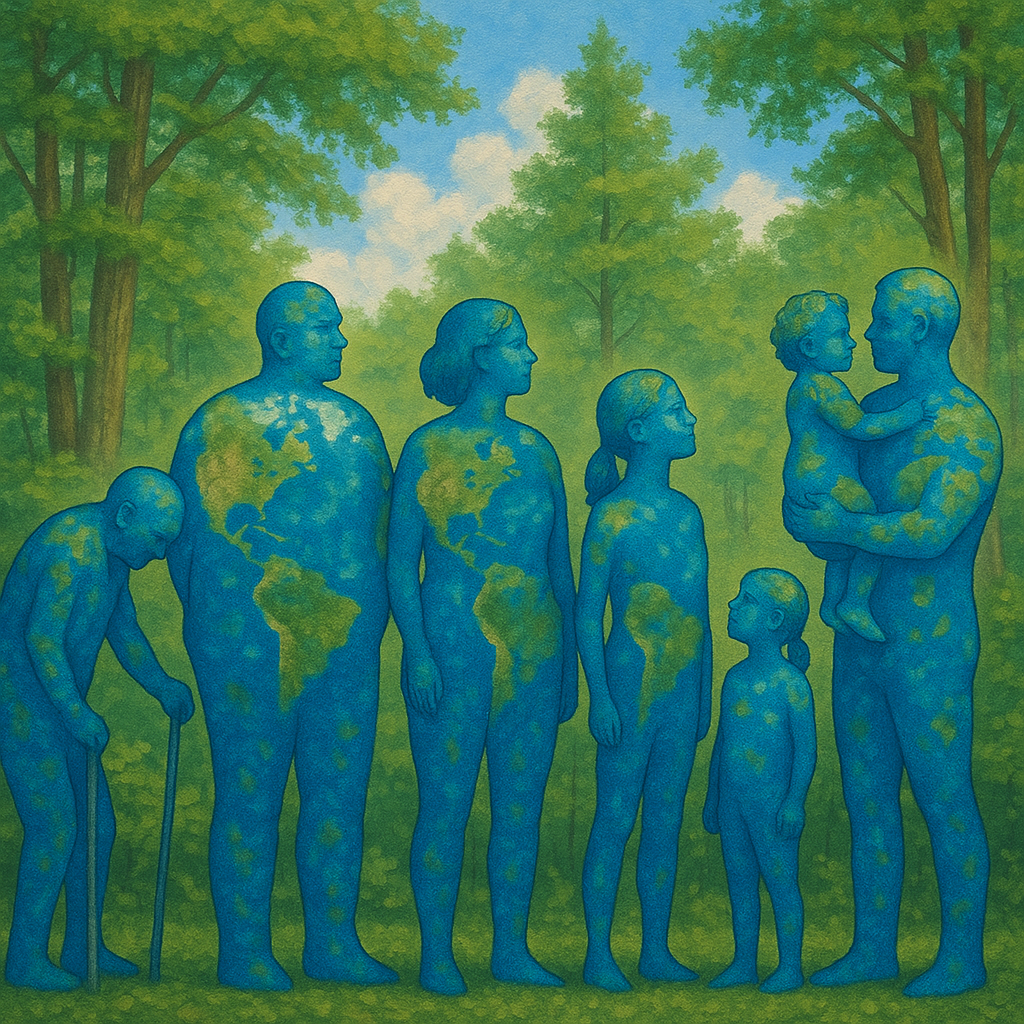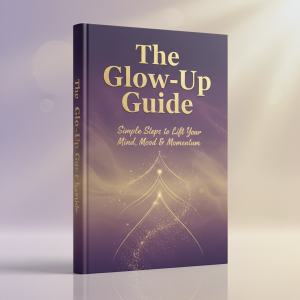by Netta Reads
It started with a simple act of kindness.
I met an elder who needed a helping hand. She was surprised and genuinely thrilled that someone would stop and help her with something she could no longer do alone. Her gratitude wasn’t just for the help itself, it was for the reminder that compassion still exists in a world that often feels too busy to notice.
That short moment stayed with me. Because as she spoke, I realized that every word she said reflected a deeper truth about us, not just her generation, but mine, and the one that will follow. Each of us, no matter our age, is part of the same living story. And no generation got here by itself.
Session One — No Generation Stands Alone
It’s easy to separate ourselves into age groups, young, middle, elder, as if we each live in our own time capsule. But the truth is, we are all extensions of one another.
The younger generation didn’t arrive here by themselves.
The middle generation didn’t inherit stability by themselves.
And the elder generation didn’t endure and guide by themselves.
Every step of progress, every misunderstanding, every act of survival has been part of a continuous human chain. Our shared emotional patterns, our fears, our ambitions, our hopes, are interwoven across time. When one link weakens, the others feel it. When one strengthens, the others rise.
So, when we ask why our world feels divided, or why compassion feels rare, the answer isn’t in which generation failed, it’s in how we’ve stopped seeing one another as extensions of the same journey.
If no generation got here alone, then no generation can heal alone.
Session Two — Seeing Ourselves in One Another
Before I can speak about my younger generation or my elder generation, I must be honest about myself. Healing begins with recognition, seeing how my thoughts, my reactions, and my judgments play a role in the larger picture.
When I reflect, I see a pattern that runs through us all. We often forget that perception shapes connection. How we see each other determines how we treat each other.
If I see a younger person as lost, I may speak to them with condescension instead of curiosity.
If I see an elder as outdated, I might miss the depth of their wisdom.
If I see myself as powerless, I may never step into leadership.
Every perception is a mirror, and it affects the emotional ecosystem of our communities.
That’s why emotional leadership must start at the individual level, with self-awareness. Because the truth is, we can’t empower the next generation if we still carry unhealed resentment toward the last one. And we can’t honor our elders if we still carry bitterness about the past.
Forgiveness, both inward and outward, is not a luxury, it’s a collective necessity. It allows energy to flow again. It allows growth to continue.
Session Three — The Elder’s Reflection, The Youth’s Mirror, and The Middle Bridge
Our elders represent memory, living history in motion. They’ve carried stories of resilience, endurance, and moral strength through eras of change. Yet, too often, they feel unseen by the younger generation.
When a young person takes a moment to listen, to help, or simply to wait patiently, something profound happens. The elder feels valued, but the young person also awakens to their own power to uplift. The act becomes reciprocal healing, an energetic exchange between generations.
Our young generation, on the other hand, represents momentum, creative fire, innovation, and emotional sensitivity. They are often misunderstood because they process the world differently, faster, louder, and more intuitively. But their empathy is a gift. It’s a new form of intelligence that can reshape how we approach leadership and healing.
Then there’s the middle generation, the bridge. We carry the dual responsibility of guiding those before us and mentoring those after us. We are translators between tradition and transformation. We must learn to listen upward and downward, balancing reverence with renewal.
When all three generations, elder, middle, and youth, acknowledge their shared power, we create something greater than coexistence. We create co-evolution.
Session Four — The Emotional Equation of Collective Healing
No generation can thrive without emotional clarity. And clarity begins with compassion. When the elder generation feels respected, they open their hearts. When the young generation feels trusted, they step into purpose. When the middle generation feels supported, they strengthen the bridge.
This is how emotional intelligence expands across time:
- Elders offer wisdom that steadies the soul.
- The middle generation offers leadership that harmonizes the heart.
- The younger generation offers vision that re-energizes the future.
Together, we form a cycle of restoration.
But to reach that cycle, we must be willing to question how we view one another. Are we seeing through compassion, or through comparison? Through empathy, or through ego? Because perception either heals or harms.
Forgiveness then becomes the formula, the unseen variable that balances the equation. When we forgive, we dissolve the energy of blame. We open the door to dialogue. And dialogue is how generational healing truly begins.
Place of Empowerment, Part One — Mindfulness in Action
Mindfulness isn’t just about meditation, it’s about intention. It’s how we show up for others in small, conscious ways. Helping an elder cross the street, calling your parent to say “thank you,” or mentoring a young person in your community, these acts carry the vibration of healing.
Each mindful act is an affirmation that says, we are not separate.
So, what can we do to cultivate this awareness every day?
- Pause before judging. Ask yourself what this person’s experience might be teaching you about compassion.
- Speak with gentleness. Words are energy; they either repair or repel.
- Honor both youth and age. Every perspective holds a key to understanding something larger than ourselves.
- Journal your emotional patterns. Reflect on how generational interactions affect your mood and outlook.
- Forgive deliberately. Even when you don’t forget, choose not to repeat the resentment.
These small actions ripple through families, neighborhoods, and communities, creating emotional safety and trust that can heal generations.
Place of Empowerment, Part Two — A Shared Future of Awareness and Strength
Imagine a community where our elders feel uplifted, our youth feel understood, and our middle generation feels supported in bridging both. That community already exists, in potential, within every moment we choose awareness over avoidance.
Our growth as a people depends on this mindful collaboration. We cannot evolve emotionally if we separate wisdom from innovation or compassion from clarity. Each generation carries a frequency that the others need to harmonize.
And while our differences may define our individuality, our shared humanity defines our destiny.
So, when you see a young person struggling, encourage them. When you see an elder waiting, assist them. When you see yourself faltering, forgive yourself. Because in every act of compassion, we are writing the story of a healed generation, one that leads with empathy, awareness, and courage.
Closing Reflection — We Are the Continuum
No generation is isolated. We are a single continuum of learning, love, and evolution. The bridges we build today will become the roads tomorrow’s generations walk across.
To be part of this healing is to accept that we are all both student and teacher, both child and elder, both wound and medicine.
If we can begin to see ourselves this way, through eyes of compassion rather than comparison, we will begin to repair not only our relationships, but the very vibration of our collective spirit.
So let us rise together, as one generational consciousness, one mindful community, one continuous heartbeat of humanity.
Because no matter our age, our color, or our class, we are still here for one another.
And that, in itself, is the truest form of emotional leadership.
About NettaReads.com
If this message spoke to you, you may enjoy exploring NettaReads.com — a mindful space where words meet reflection.
Here, I share e-books, guided journals, and soulful writings that explore confidence, compassion, healing, and self-awareness.
Each creation is meant to help you pause, breathe, and reconnect with the deeper rhythms of your own growth.
There’s no rush, no expectation — only an open invitation to explore when your heart feels ready.



